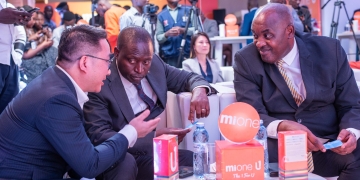
LUSAKA, Zambia — Zambia is ramping up its efforts to provide electricity to its entire population, with a focus on off-grid solar energy solutions. The country has made significant progress in increasing access to electricity, rising from 30% in 2017 to nearly 50% currently.
However, the remaining half of the population still lacks access to electricity, and the government is working to address this issue. Zambia’s reliance on hydropower for 80% of its electricity generation has been affected by recent droughts, highlighting the need for alternative energy sources.
To achieve its goal, the Zambian government is collaborating with the World Bank, the Common Market for Eastern and Southern Africa (COMESA), and the Africa Minigrid Development Association (AMDA) to invest in off-grid solar energy throughout the country.
“Our target is to have at least 200 solar mini-grids operational by 2030, ensuring that every rural district in Zambia has access to clean, affordable, and reliable electricity,” said Makozo Chikote, Minister of Energy of Zambia.
Solar home systems and mini-grids have the potential to reach the 8.5 million Zambians currently without electricity. However, developers are facing technical and financial obstacles, which are being addressed through conferences and initiatives.
“Energy access changes people’s lives. It improves health and quality of life and helps create jobs and livelihoods that lift people out of poverty,” said Achim Fock, World Bank Country Manager for Zambia. “The World Bank Group is partnering with the African Development Bank and other partners on Mission 300, an ambitious initiative to connect 300 million people to electricity in Sub-Saharan Africa by 2030 and accelerate development and poverty reduction.”
The World Bank Group is supporting Zambia’s electricity access initiatives, including the development of mini-grids, through projects like the Electricity Services Access Project (ESAP) and the Zambia-Tanzania Interconnector Project (ZTIP).










Discussion about this post